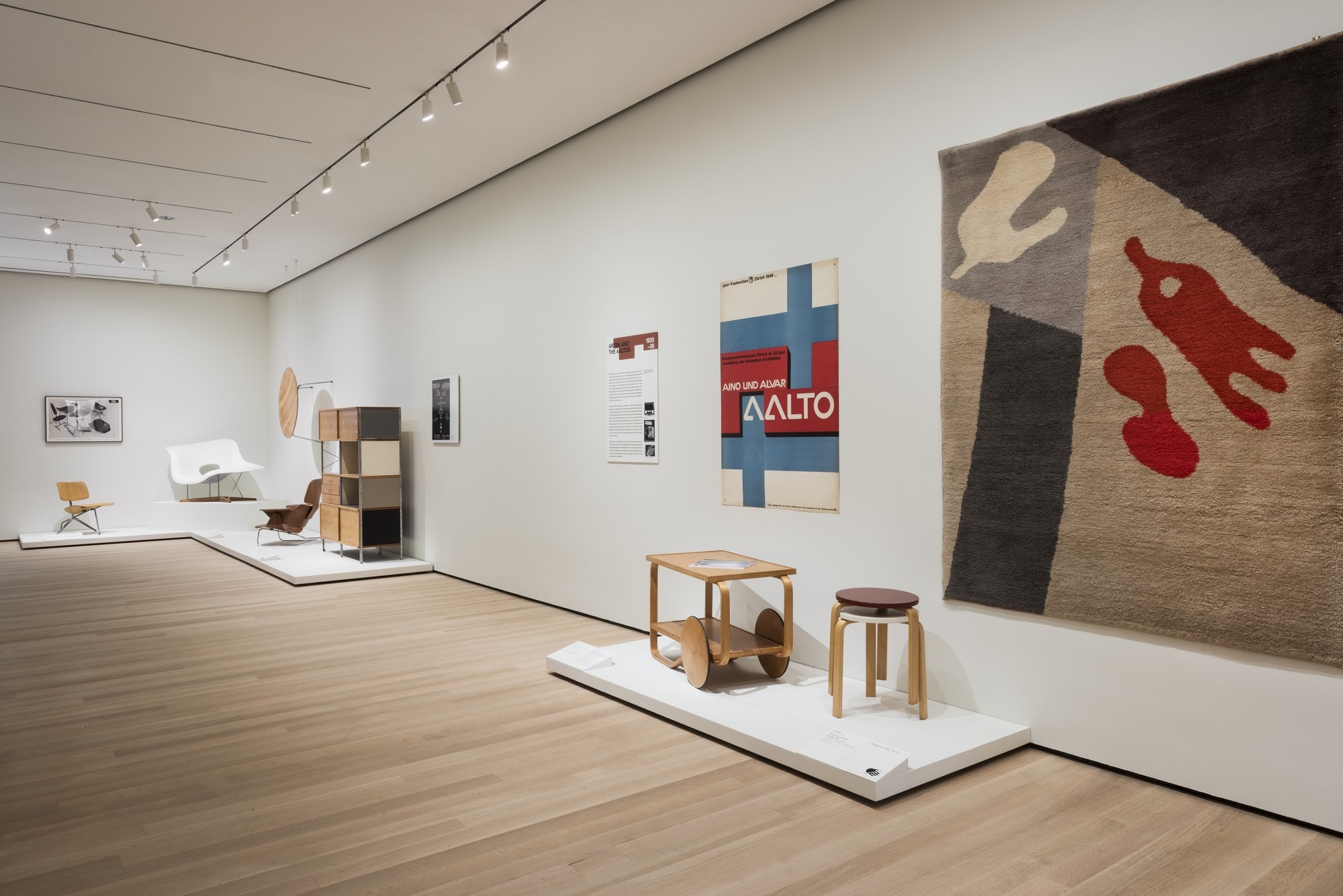How Should We Live?
Propositions for the Modern Interior
01 Oct 2016 - 23 Apr 2017

Installation view of the exhibition, "How Should We Live? Propositions for the Modern Interior"
October 1, 2016–April 23, 2017. IN2364.9. Photograph by Martin Seck.
October 1, 2016–April 23, 2017. IN2364.9. Photograph by Martin Seck.
Since the Department of Architecture and Design was first established in the early 1930s, the Museum's curators, guided by a belief in the power of design to shape everyday experiences and perceptions, have focused on the question “How should we live?” as one of the most vital issues in contemporary design.
How Should We Live? explores the complex collaborations, materials, and processes that have shaped the modernist interior, with a focus on specific environments—domestic interiors, re-created exhibition displays, and retail spaces—from the 1920s to the 1950s. The exhibition brings together over 200 works, drawn from MoMA's Architecture and Design collection as well as the Library, Drawings and Prints, Painting and Sculpture, Film, and Photography. Rather than concentrating on isolated masterworks, attention is given to the synthesis of design elements within each environment, and to the connection of external factors and attitudes—aesthetic, social, technological, and political—that these environments reflect.
The exhibition looks at several designers’ own living spaces, and at frequently neglected areas in the field of design, including textile furnishings, wallpapers, kitchens, temporary exhibitions, and promotional displays. Highlights include recent acquisitions from projects directed by major women architect-designers—Eileen Gray furnishings for the house E-1027 (1929), and Charlotte Perriand’s study bedroom from the Maison du Brésil (1959), for example. Designs from other noted partnerships include Lilly Reich and Mies van der Rohe’s Velvet and Silk Café (1927), Grete Lihotzky’s Frankfurt Kitchen (1926–27), and collaborations between Aino and Alvar Aalto, Ray and Charles Eames, Florence Knoll and Herbert Matter, and Charlotte Perriand, Pierre Jeanneret and Le Corbusier.
In collaboration with the MoMA cafés and Knoll, we are excited to offer visitors a unique experience: the chance to enjoy a pour-over coffee in a contemporary evocation of Lilly Reich’s 1927 Velvet-Silk Café at the Die Mode der Dame (Women’s fashion) exhibition in Weimar-era Berlin. The café is open from 11:00 a.m to 4:30 p.m. every day, and on Fridays from 11:00 a.m. to 7:30 p.m.
Organized by Juliet Kinchin, Curator, and Luke Baker, Curatorial Assistant, Department of Architecture and Design, MoMA.
How Should We Live? explores the complex collaborations, materials, and processes that have shaped the modernist interior, with a focus on specific environments—domestic interiors, re-created exhibition displays, and retail spaces—from the 1920s to the 1950s. The exhibition brings together over 200 works, drawn from MoMA's Architecture and Design collection as well as the Library, Drawings and Prints, Painting and Sculpture, Film, and Photography. Rather than concentrating on isolated masterworks, attention is given to the synthesis of design elements within each environment, and to the connection of external factors and attitudes—aesthetic, social, technological, and political—that these environments reflect.
The exhibition looks at several designers’ own living spaces, and at frequently neglected areas in the field of design, including textile furnishings, wallpapers, kitchens, temporary exhibitions, and promotional displays. Highlights include recent acquisitions from projects directed by major women architect-designers—Eileen Gray furnishings for the house E-1027 (1929), and Charlotte Perriand’s study bedroom from the Maison du Brésil (1959), for example. Designs from other noted partnerships include Lilly Reich and Mies van der Rohe’s Velvet and Silk Café (1927), Grete Lihotzky’s Frankfurt Kitchen (1926–27), and collaborations between Aino and Alvar Aalto, Ray and Charles Eames, Florence Knoll and Herbert Matter, and Charlotte Perriand, Pierre Jeanneret and Le Corbusier.
In collaboration with the MoMA cafés and Knoll, we are excited to offer visitors a unique experience: the chance to enjoy a pour-over coffee in a contemporary evocation of Lilly Reich’s 1927 Velvet-Silk Café at the Die Mode der Dame (Women’s fashion) exhibition in Weimar-era Berlin. The café is open from 11:00 a.m to 4:30 p.m. every day, and on Fridays from 11:00 a.m. to 7:30 p.m.
Organized by Juliet Kinchin, Curator, and Luke Baker, Curatorial Assistant, Department of Architecture and Design, MoMA.
